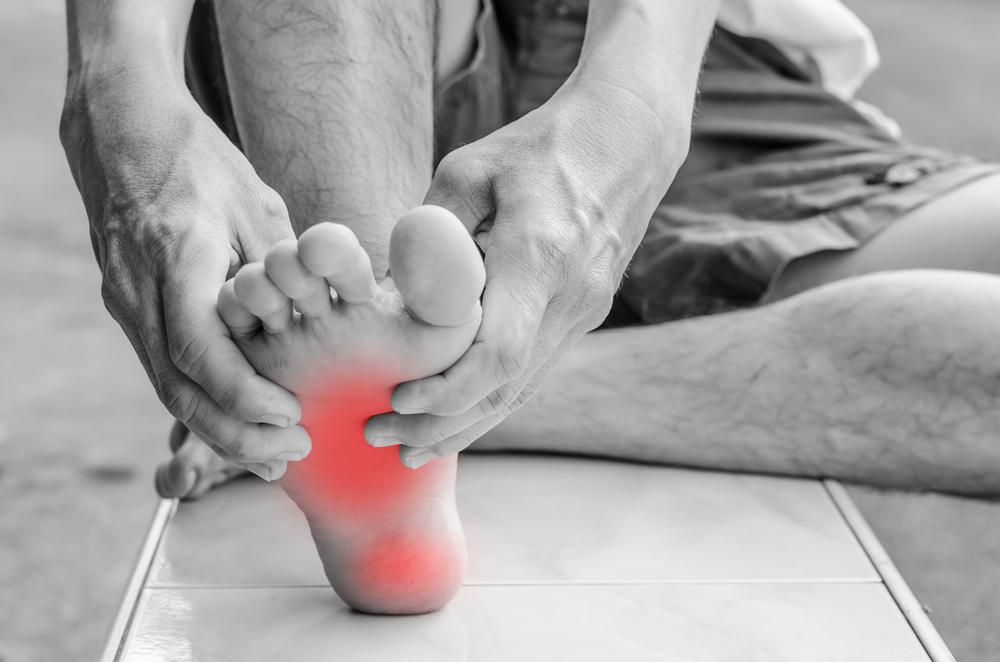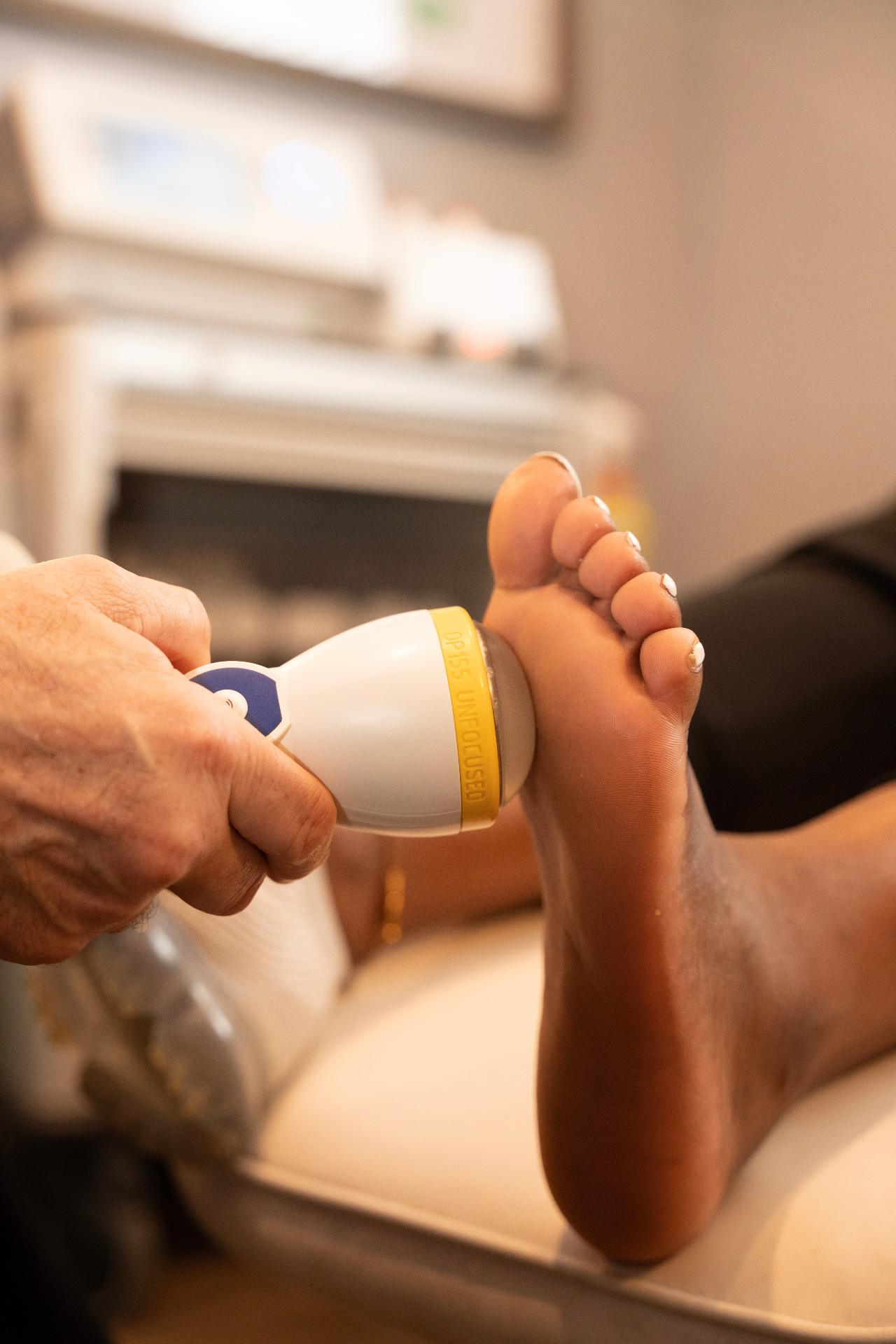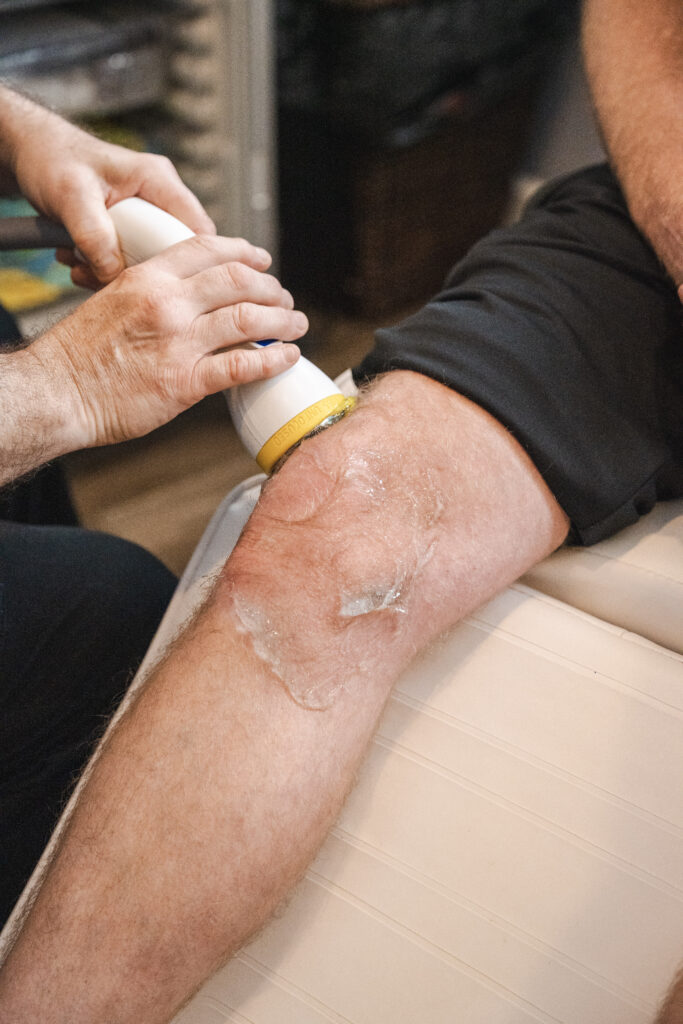Foot pain can arise from a plethora of causes, from incorrect gait to underlying health issues. Below are some prevalent causes of foot pain:
- Muscle or ligament strains: Excessive use, improper movements, or abrupt actions can result in strains or sprains in the muscles and ligaments of the foot, causing pain.
- Plantar fasciitis: Inflammation of the thick band of tissue that connects your heel to your toes, causing heel pain.
- Bunions: A painful bump that forms on the base of the big toe.
- Arthritis: This degenerative joint disease can affect the foot, causing pain and stiffness.
- Injuries from accidents or sports: Falls, car accidents, and sports-related activities can cause injuries to the foot, leading to pain.
- Achilles tendonitis: Inflammation and irritation of the Achilles tendon, commonly caused by overuse or repetitive strain.
- Morton’s Neuroma: A thickening of tissue around a nerve in the foot, usually between the third and fourth toes, causing pain, tingling, or numbness.
- Foot ulcers: Open sores or wounds that develop on the foot, often as a result of poor circulation, nerve damage, or pressure from ill-fitting shoes.
- Diabetic foot ulcers: Foot ulcers specifically associated with diabetes, typically caused by a combination of neuropathy (nerve damage) and reduced blood flow to the extremities.
It’s important to note that these are just some of the most common causes of foot pain. If you are experiencing foot pain, you can learn if your condition is suitable for treatment and try shockwave therapy with our New Patient Special.
When it comes to addressing foot pain, shockwave therapy emerges as a promising non-invasive choice that can offer numerous benefits. This therapy operates by deploying high-energy shock waves to stimulate healing in the affected region. Here are some perks of employing shockwave therapy for foot pain:
Speedy Healing
Shockwave therapy uses high-energy acoustic waves to catalyze the body’s inherent healing process. This can expedite the recovery of damaged tissues, including muscles and ligaments, particularly beneficial for individuals experiencing persistent or recurrent foot pain.
Diminished Dependency on Medication
Many conventional foot pain treatments involve medications that can cause unwanted side effects. Shockwave therapy presents a drug-free alternative, reducing the need for painkillers or other treatments, making it an appealing option for those who prefer non-pharmaceutical interventions.
Enhanced Quality of Life
Foot pain can drastically affect one’s quality of life, hindering daily activities or recreational pursuits. Shockwave therapy can alleviate pain and boost mobility, enabling patients to resume their normal activities and enhance their quality of life.
Non-Invasive and Safe
Unlike many foot pain treatments, shockwave therapy is non-invasive and safe. It doesn’t require incisions or anesthesia and carries a low risk of complications. This makes it an excellent choice for those wishing to avoid more invasive treatments.
All in all, shockwave therapy represents a promising treatment option for those experiencing foot pain.
The Mechanism of Shockwave Therapy
Shockwave therapy is a non-invasive treatment alternative that employs high-energy sound waves to stimulate the body’s natural healing process. Here’s how it functions:
Defining A Shockwave
Shockwaves are swift acoustic pulses characterized by a high-pressure surge followed by a comparatively lower-pressure trough. These phenomena are part of our daily life and can be produced by various sources such as supersonic jets, explosions, lightning, earthquakes, or any other event causing a shift in air pressure.
A device is utilized to create and safely deliver shockwaves to the affected area of the foot. These shockwaves can enhance healing in the foot at the cellular level, improve blood circulation, and kickstart the body’s natural healing process.
Varieties of Shockwave Therapy
Numerous types of shockwave therapy are available in the market, with radial shockwave therapy (RSWT), focused shockwave therapy (FSWT), and acoustic wave therapy (AWT) being the most common.
Radial Shockwave Therapy employs a hand-held device that applies pressure waves to the skin’s surface. This shockwave therapy type is a popular option for treating conditions such as plantar fasciitis, Achilles tendinopathy, and tennis elbow. However, it may not effectively treat deeper tissue injuries, and patients may need multiple treatment sessions.
Focused Shockwave therapy uses a device that delivers high-intensity shockwaves directly to the affected area. This shockwave therapy type is commonly used for chronic conditions like plantar fasciitis and slow-healing bone fractures. However, it can be uncomfortable for some patients, and the intensity of the treatment may need adjustment based on individual needs.
Acoustic Wave Therapy uses a device that delivers low-intensity shockwaves to the affected area. This shockwave therapy type is commonly used to improve blood flow, alleviate pain and inflammation, and promote tissue healing. It is often used to treat conditions such as erectile dysfunction and cellulite. However, the low-intensity shockwaves may not effectively treat some conditions.
Unfocused Shockwave Therapy delivers high-intensity shockwaves that penetrate a wider and deeper area of tissue (7cm x 12cm) than focused shockwaves (1cm x 12cm) or radial waves (2cm x 2cm). SoftWave for foot pain is the only unfocused shockwave treatment widely available in the US. Unfocused shockwaves can treat the same conditions as traditional focused shockwave therapy, while providing superior relief for large joints and muscle issues such as shoulder, neck, or foot pain. Unfocused shockwaves may also require fewer sessions compared to radial or focused shockwave treatments.






